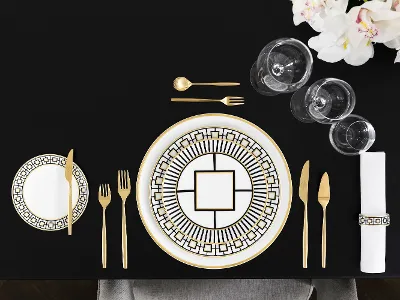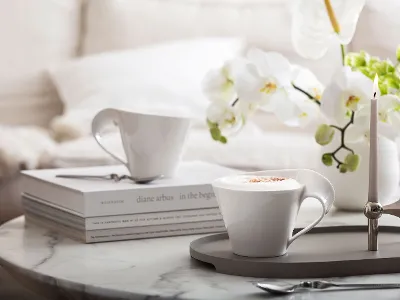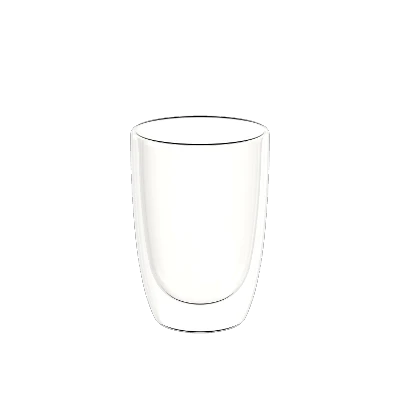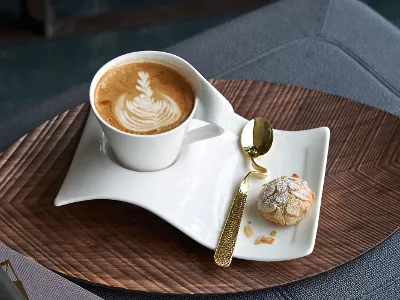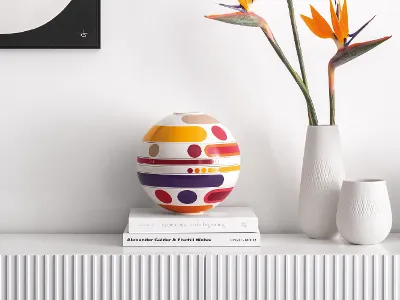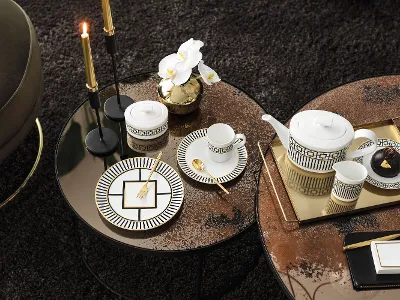
British teatime
Teatime is a symbol of the English culture of enjoyment and is famous all over the world. However, the British do not even use the term "teatime" themselves, as drinking tea is celebrated at all different times of the day in the UK: Early morning tea is enjoyed in bed, breakfast tea with breakfast, and elevenses before lunch. Afternoon tea has achieved worldwide fame. When people talk about teatime, they are usually referring to this traditional afternoon tea.
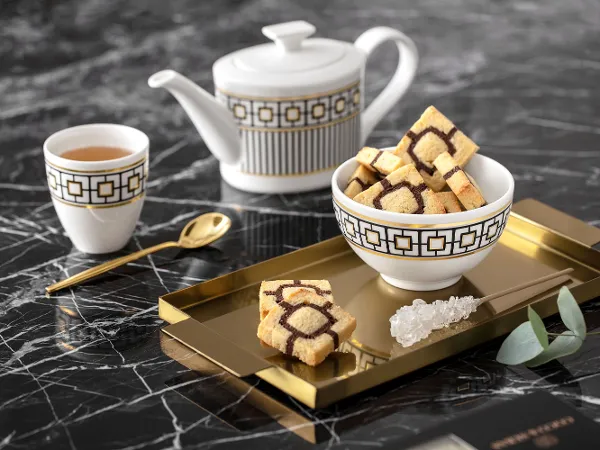
What is a teatime?
Fine tea, delicious cakes, appetizing tidbits, fine china and a stylish ambience:
British teatime is a refined moment to be enjoyed with guests over a lively chat, and served at a low coffee table.
But how did the British tea culture come about?
A look at history reveals many a surprise - would you have known that England owes its teatime to two strong women?
When is the classic teatime?
The traditional afternoon tea is taken between three and five o'clock in the afternoon, and was originated in 1840, by Anna Russel, the seventh duchess of Bedford, lady-in-waiting to Queen Victoria.
In her day, people only ate a light meal at lunchtime, and dinner was only served after seven in the evening. Lady Bedford therefore had a cup of tea and a small snack brought to her in the afternoon, which she served to her guests in the drawing room. Lady Bedford's afternoon tea was so popular that it soon became a favorite pastime among the British aristocracy.
Tips for preparation
Whether you first add milk to the cup and then the tea or vice versa of course is up to your personal taste. The British Standards Institution (BSI) recommends first letting the tea steep in the teapot for 3 to 5 minutes and then pouring it directly into the cup.
The convention for making tea in East Frisia however, is first to place white sugar in the cup, then pour in the hot tea.Finally add a dollop of cream in a circular motion - because Frisians frown on stirring.
We recommend using fresh milk with up to 3.5 percent fat content and warming this to room temperature before adding it to the tea. A small milk jug that holds enough milk for a whole teapot is ideal for this.
First warm your teapot with hot water. Then pour out this water and add the tea leaves to the teapot. Pour on fresh hot water and leave the tea to steep for 2 to 5 minutes, depending on your taste and the variety.Or use a tea ball or tea strainer to be able to remove the tea leaves once the tea is ready. Remember, the longer the tea steeps, the stronger the flavor and the more tannins are released.
What snacks are best at teatime?
The British usually drink their tea unsweetened, as this allows its flavor to develop better. To balance out some of the more bitter teas, cakes are often served at teatime.
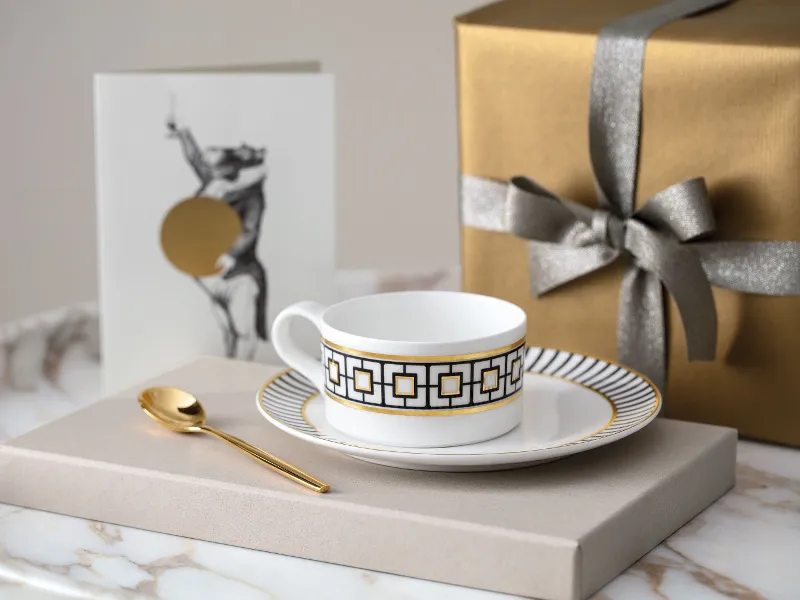
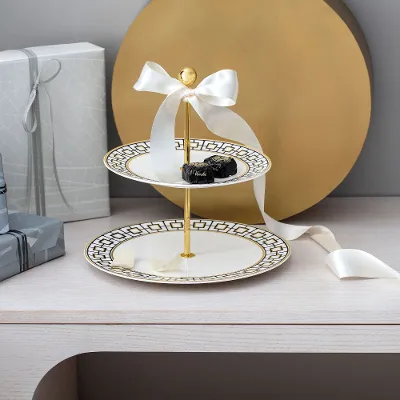
Image 1: Enhance your British teatime with an elegant cup from the MetroChic collection. | Image 2: For teatime in style, serve various snacks from a 3 tier stand. | Image 3: A teapot is both practical and elegant for serving different types of tea.
Sweet treats
The following culinary specialties often accompany a typical teatime:
Shortbread:
Sweet shortbread originates in Scotland, but is very popular throughout the UK. It is made with lots of butter, which gives it its full-bodied taste, and is often served with afternoon tea.
Cupcakes:
There are virtually no limits to the imagination when it comes to cakes with a lavish icing or cream topping. Recipes are becoming more and more varied, and there are now both sweet and savory variations.
Crumbles:
Crumble is a very tasty treat baked with fruit: apple, blackberry, peach, plum, rhubarb and gooseberries are very popular. Crumble is served warm with vanilla custard or ice cream.
Toffee and fudge:
Fudge is quite soft and is made from caramel, butter, and milk or cream, with added rum or raisins. Toffee is harder, but particularly enjoyable with added peanuts. Fudge and toffee are ideal to accompany an afternoon tea.
Scones:
A traditional option for afternoon tea is tea and scones with jam and clotted cream. The question is, do you put the jam on the first or the clotted cream?
Scones can also be served with honey.Tea Bread:
There are many recipes for a yeasty tea bread. Popular tea breads are encrusted with fruit, usually currants or raisins, and is often baked with malt, cinnamon and other spices. It is usually served sliced with butter.
Tea cake:
English teacake is usually baked with raisins, candied lemon and orange peel.
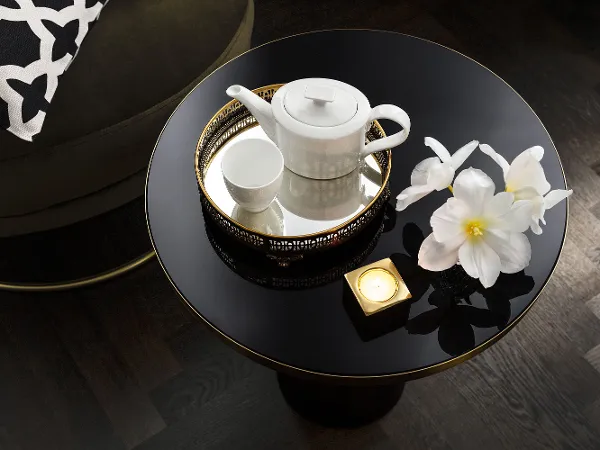
Typical teas include:
Darjeeling - a light North Indian tea.
Ceylon tea - a stronger Indian tea.
Assam - a very strong and spicy Indian tea.
Lapsang Souchong - a Chinese tea with a smoky aroma.
Yunann - a fine, medium-bodied Chinese tea.
Earl Grey - a tart, strong blend of black tea, flavored with bergamot.
Lady Grey - Earl Grey flavored with orange or lemon.
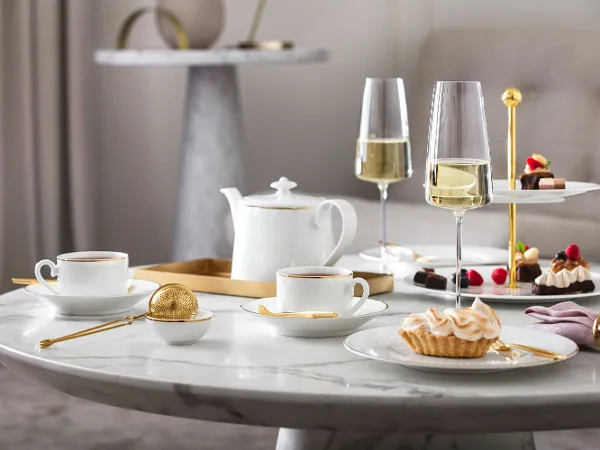
Afternoon tea is a real treat that can be enjoyed at home!
The British tradition of afternoon tea was established by two strong women in the mid nineteenth century, and is today celebrated all over the world as an opportunity to pause for a moment - like a short and pleasant vacation from everyday life.
Give it a try! It doesn't always have to be completely English: whatever you and your guests find tasty is allowed. Get creative - and create your own personal teatime at home!

